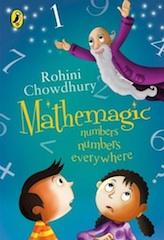

The book highlights the importance of understanding concepts for which the number system has been established. It also highlights the importance of recognizing that the foundations of interest and engagement in mathematics which comes from children thinking math and not just being obsessive about routine, algorithmic drilling.
To think math they need to dialogue and discuss math so that they are able to analyse and contribute to or make decisions that empowers their numeric sense. In contemporary school systems the names of numerals are taught to children to be learnt by rote, and the next engagement is to focus on computation. This first engagement is sans an engaging thought entrainment as the process is focussed on. However children need to understand the world around them and then find appropriate tools to expand their understanding. There are numbers all around us, and the concept of numeracy and understanding ‘quantum’ is essential. When this understanding is accommodated, children would engage with computation and systems that will enhance their exploring ‘quanta’.
The number system is a tool used to understand many things around us, like counting quantum, measuring and set things in order. Tools are developed to explore a fundamental question, not as a foundation of the discipline. A carpenter has to understand a chair and its purpose design before he uses a screw-driver or a chisel for that matter. Written in an informal format the book appears to consider children as audience but the contextual style is more for parents/ teachers.
If parents and children are able to see the BIG PICTURE that is being presented, it will help in enhancing the applicability of Math concepts and skills, rather than deal with it as a ‘marks getting’ subject. It would sow the foundations of thinking math before the rote/ procedural approach to math is coveted by the child.
I do hope this book will open some doorways for teachers to engage in pre-math thinking during the early childhood stage.